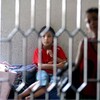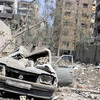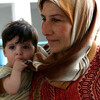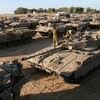
Down the Memory Hole
29 July 2006
In the wake of the most serious outbreak of Israeli/Arab violence in years, three leading U.S. papers—the Washington Post, New York Times and Los Angeles Times—have each strongly editorialized that Hamas in Gaza and Hezbollah in Lebanon were solely responsible for sparking violence, and that the Israeli military response was predictable and unavoidable. These editorials ignored recent events that indicate a much more complicated situation. As we recently noted, the portrayal of Israel as the innocent victim in the Gaza conflict is hard to square with the death toll in the months leading up to the current crisis. Read more about Down the Memory Hole








